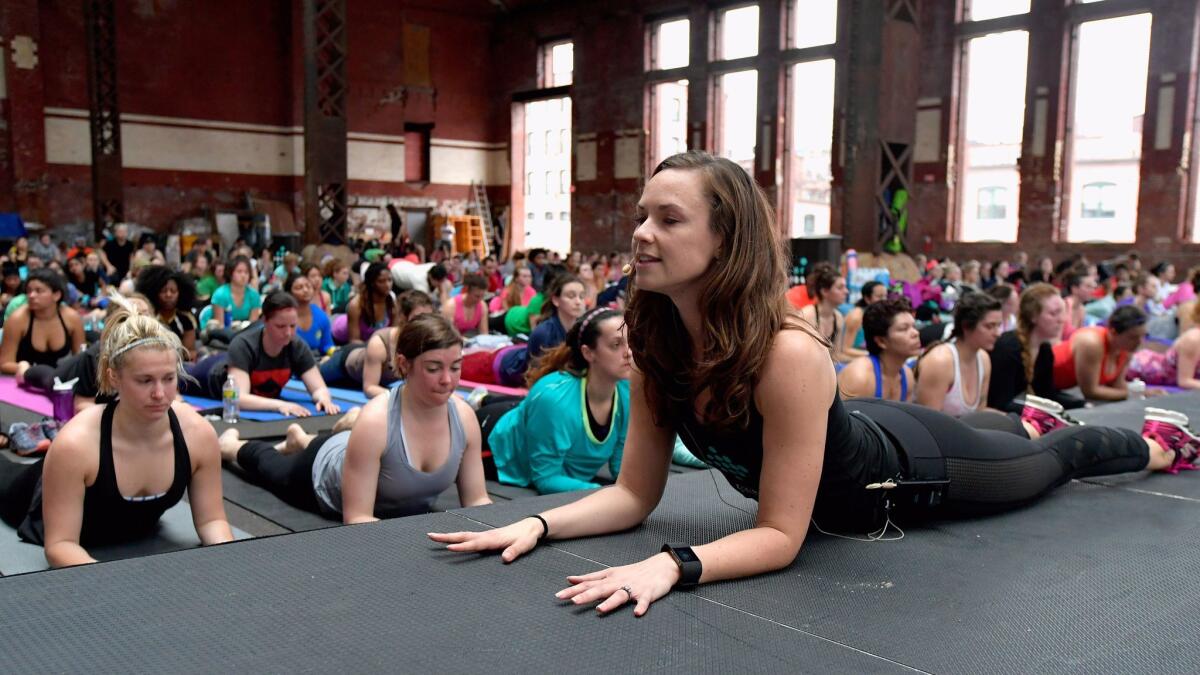Your fitness tracker can count your steps, but it’s not that good at monitoring your heart rate

Using that nifty fitness monitor to keep track of your heart rate while you exercise?
If you exercise while remaining still, it may work pretty well. If you move while exercising, not so much.
A study published Monday in the Annals of Internal Medicine put four wearable fitness trackers to the test — both against one another and against the kind of electrocardiography monitor you’d probably encounter while taking a stress test in an doctor’s office.
The results show that the wristband fitness trackers may be a fine gauge of how many steps you take. But when it comes to tracking changes to your heart rate that come with movement, these monitors don’t stack up, the authors found.
The trackers tested in the study range in price from $57 (for the Mio Fuse) to $500 (for the Basis Peak). To measure heart rate, at least one of them uses light reflected from the skin to detect tiny changes in skin blood volume.
Researchers from University of Wisconsin in Madison and Loras College in Dubuque, Iowa, had 40 healthy adults strap on four popular activity trackers, two on each arm. Study participants, ages 30 to 65, also were rigged up to an electrocardiograph, which uses leads in a chest strap to detect the wearer’s heart rate.
For stationary subjects, the Fitbit Surge diverged least from the heart rate measurement taken by the electrocardiograph. Readings taken by the Basis Peak diverged the most. The Fitbit Charge and the Mio Fuse fell in between.
But when the subjects were asked to exercise on a treadmill for 10 minutes at 65% of their maximum heart rate (a moderate-intensity pace), the performance of all the trackers was deemed “relatively poor,” according to the study. Compared with the electrocardiograph’s readings, the trackers reported heart rates that were as many as 41 beats per minute too slow and as many as 39 beats per minute too fast.
Neither were these fitness monitors very reliable.
When the researchers tested the “repeatability coefficient” — essentially, the degree to which a given tracker returned the same measurements for the same participant under the same conditions — the Fitbit Surge performed roughly as well as an electrocardiograph while subjects were at rest. But when study participants exercised, all four trackers returned heart rate readings that varied at least twice as much as did the electrocardiograph.
Wristband activity trackers are gaining adherents among researchers as well as among fitness enthusiasts. But while the monitors may be good at measuring strides and at encouraging users to take more of them, their use by physicians and researchers may be premature, the study authors concluded.
“More research is needed before we can confidently conclude that the monitoring feature for heart rate is sufficient to help clinicians advise their patients about health issues and conduct clinical trails that requires a high level of accuracy and reliability for heart rate measurement,” they wrote.
Lisa Cadmus-Bertram, a University of Wisconsin kinesiologist who worked on the study, said the results shouldn’t prompt anyone to toss their tracker.
“On the whole, fitness trackers still provide a tremendous amount of useful information to the average user who just wants some feedback to help them to increase their exercise level,” she said.
MORE IN SCIENCE
Speed up drug approvals at FDA? It’s already faster than Europe’s drug agency
Even in choosing science books, Americans seem divided by politics




